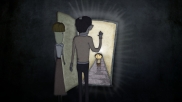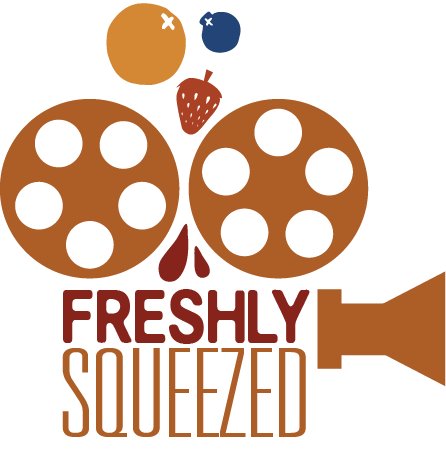Let's Talk Film!
Welcome to the world of tomorrow (Pt. 2)
A follow up piece by Brian Dunster, focusing on producing a directing your own including some of the finer points of sourcing a crew and cast.
Anyone who saw the movie wouldn’t say that.
The world is a busy place and in the iconic words of Andy Dufresne, “it comes down to a simple choice really, get busy living or get busy dying.” Where to begin though? Well I always believed that if you had a plan, even a doddle on a napkin with an idea, you’re already on your way. Keep reading if you want to find out more or keep doodling on that napkin.
On Your Own
You are a person with a thousand ideas but you haven’t thought of them yet. Still, you have an opening scene to a short film. It’s good. You know it’s good. And that’s the most important thing in short films; getting that opening scene to draw in your audience is essential otherwise they’ll turn off. But how do you make it a reality? Well, here are some tips on getting started.
If you find yourself with a good script and manage to pull together enough money to go out on your own here are the three basic things you will need:
1. Actors
There are many agencies that deal with actors specifically but they’ll always do what is best for their clients and will expect some sort of payment for their time. If this isn’t within the budget I suggest trying to go around and contact the actor directly. Facebook! Facebook may be a royal pain when you’re in desperate need to finish an essay – it’s procrastination at its worst – but for contacting people it is a miracle worker. Actors are more likely to reply to you directly than telling you to contact their agent. Just sound professional and don’t hide any facts. Be up front but don’t be unsympathetic. Tell them there is no fee involved but sweeten the deal by providing the bare minimum, like travel fare and food. They’ll appreciate that. And after you’ve wrapped surprise them with a small token and a card. This goes a long way. And next time you are in need of an actor they’ll have no qualms returning.
2. Equipment
Renting equipment is expensive. And if you are not covered by college insurance then you will need to buy some. No rental company will provide you with equipment without proper insurance. The likes of Film Base and Production Depot are quite strict on this manner. But here are some ways to go about getting what you need.
If you have crew members who are still in college, and if the equipment is available, ask them to hire out what you need under their name. This won’t put you under the colleges insurance but you will have everything necessary, from cameras to lights, to film. Just be very diligent and respectful of the help given and treat the equipment as though it is your own.
Many freelance photographers and filmmakers lend out their equipment for a small minimal fee. They understand the constraints of small budget films and they will try to provide the best deals possible. But if you feel that you are being scammed then politely decline and try another way.
Gathering the right equipment is never easy, nor is lugging it around to different locations, but if you have a friend or a friend of a friend with a good quality camera, I suggest asking them to join your crew and make them camera operator. This way you will kill two birds with one stone. Note: No birds were harmed during the writing of this blog. This brings me onto my next point…
3. Crew
Finding the right crew is essential. You want people you know will commit and act professional on set. First thing is to find a producer who understands your vision. Then find a cinematographer who listens to ideas but also brings something to the table, like salty snacks and storyboards. In my own personal experience a cinematographer will like to crew the camera department with people they have worked with, and found competent, in the past. The same goes for the sound recorder. They will prefer to choose their own boom operator. Most directors like to edit their films themselves but I would suggest bringing someone else in on the project. A good editor can provide a different perspective and could see something you might have missed.
The heads of departments or – H.O.D’s – will be your family for the duration of pre-production, principal photography, and post production. Treat them right and your film will come out shinier than the vampires in Twilight.
The Men in Charge
There are many production companies in Ireland. But where does one begin? I suggest clicking onto IFTN (Irish Film and Television Network). There you will find a list of every production company and its directing managers. Study up on what they have produced and if you find one that suits, try giving them a call. I know for some people calling feels like the worst job in the world. You’re not alone. The idea of getting rejected is terrifying. But as Yoda once said it’s, “do or do not, there is no try.” Even if you get nowhere calling these companies at least you are willing to put yourself out there and sooner or later you will be rewarded.
If you already have contacts, utilise them, drop a name here or there. There is no harm as long as you can provide an actual reference. Don’t blatantly lie. And follow the phone call up with an email. Even if you were unsuccessful, email the company and thank them for their time. There’s a possibility they’ll remember you if a position opens up.
Film in Ireland is an ever growing industry. Just remember to always to keep your friends close, your enemies closer but your film contacts the closest. And don’t be afraid to be naïve. I‘ve still got my Oscar speech in my jacket pocket. Dream big but stay practical. See you on the red carpet.
Ever wondered how to go about efficiently networking as a student in the film business? Brian Dunster provides some tips to help you succeed.
Some people are natural born killers at making contacts and in the grand expanse of the film making universe you will often hear the phrase, “it’s not about what you know but rather who you know.” I can tell you right now that this is not exactly a lie, and so, here are some ways you can fill up those address books / new age mechanical devices you have recently procured.
The College Way
Don’t get me wrong you don’t have to go to college to get into film making but it is an option and there are advantages that come with it. For one it shows that you have a strong passion for film and are willing to learn more. But it is also a great place to meet other film enthusiasts; people who share your love for the craft and the love for Heinz Hoops on toast – a nutritious meal for any student.
Once you have established this profound connection with other students for Heinz Hoops on toast your professional relationship can start. You will discover you’ll have similar tastes and aspirations and as you trek through college together, developing skills in particular areas of film, you will remember those whom you would most ideally like to work with. And they’ll remember you - hopefully. These are your go-to contacts for when you want to make a low budget independent movie and send it into Sundance with the hopes of getting recognised.
College isn’t for everyone however, and it does take four years to complete a degree. But if you have the time and the money (you will need to save for projects) I highly suggest trying it out. Who knows, you could find your Matt Stone to your Trey Parker.
That Festive Feeling
If you have never volunteered before I strongly suggest that you get out there. This is a brilliant opportunity to establish connections while having great fun. There are many film festivals across Ireland that seeks bright and enigmatic film lovers of all ages. Sure, you don’t get paid, and it’s not an internship promising a job when it is over, but it has other rewards. Note: Employers love to see that you have volunteering experience.
People come from all over the world to volunteer. It is an environment where you will talk, eat, and drink film for the duration of any festival. The contacts here are also invaluable. You will get to know the ins and outs from the people who work behind the scenes of a fast moving film festival and if you do your job well and show up on time, I guarantee you’ll want to come back and they’ll be happy to have you. And if you’re looking for a reference I promise it’ll be glowing.
However, I would suggest researching the films you are working at beforehand and find out whether or not the director is attending. One faithful evening a young and naïve blog writer refused Wim Wenders admission into his own film because he didn’t appear to have a ticket. Just a heads up, he’s a tall German man with long curly grey hair. Something like that sticks with you for the rest of your festival life, which brings me onto...
Tall Tales
A story behind your name is a guaranteed way to get you remembered in the film industry. This is not a joke. If you are eager and extremely helpful then you are going to be known for a long time. If you are irresponsible and unprofessional you will be remembered forever. Ireland is a small country and the film community talks. Have you ever played Six Degrees of Kevin Bacon? Assume anyone knows everyone and keep your unwanted opinions to yourself. Your mouth can get you into a lot of trouble. Even if you think you are all alone be wary of hidden sound equipment or lingering crew members. This is the easiest and silliest way to lose contacts and it’ll keep you from being hired again.
The same could be said about the Wim Wneders fiasco. Although this seemed like a disastrous, and almost career threatening experience, if you are genuine, polite, and completely ignorant as I was, then you will get away with looking like a twit and it’ll turn into an amusing story to tell to the new recruits. But if something like that happens to you, blame it on a communications breakdown. It’s always a communications breakdown.
These are just some of the thoughts and experiences I have had and no doubt yours will be different. It’s a tough world out there but it is made less tough with good friends and reliable contacts to help you along your chosen path towards that Oscar glory. Or, if you’re like me, you’d be satisfied with a thumps up from a far distance from Steven Spielberg. A boy can dream. A boy can dream.
On the next exciting blog… making it on your own and facing the big bad production companies.
Jonathan Clancy has a look at how some now famous directors managed to keep to low budgets in order to get their first foot on the ladder.
In light of all the great films being made today, with such limited resources, we will be taking a look at a selection of the most interesting films made for peanuts by some of Hollywood’s finest, while getting advice from two of Ireland’s top directors.
Michael Lavelle, writer and director of Mummy’s Little Helper and I Hate Musicals! – The Musical, advises that practical experience is key and that your learning really begins as you film, ‘Practice. Shoot, shoot, shoot. Then edit. Then show it to someone. You can read all the books you want, talk all you like, but nothing replaces actually making films. Play. That’s where it all started, don’t lose sight of it.’
All of the following films demonstrate this mentality. Made for little or no budget. Some are even lacking the more basic resources such as decent actors, lighting, or continuity. None-the-less they all exhibit the raw talent of their auteurs. They may not be pretty but they’re a clear illustration that you should never let anything hold you back from making your film.
My Best Friends Birthday (1987) – Quentin Tarantino.
What Tarantino has since referred to as his ‘film school’, was a feature film shot on 16mm for roughly $5,000 over the course of four years. Tarantino co-wrote and directed the rough and ready comedy, which rotates around the adventures of two friends planning a party. The infamous director’s debut is poorly acted (Tarantino included), looks awful and suffers from the fact that half of the film was destroyed in a lab fire.
What remains, however, of the pieced together footage fully demonstrates the maestro’s flair for dialogue. As the film begins we are dropped in on a conversation where Quentin’s character describes how his suicidal urge at the age of three, following the death of rock star Eddie Cochrane, was cured after he watched a very entertaining episode of The Partridge Family. This opening, of perverse off beat humor and pop references, leaves no illusions as to whose film we are watching.
Various other, stylistic, elements that the director would later become synonymous for are also present, such as kung fu showdowns, seedy underworld figures and a slick soundtrack. Though the film didn’t have much effect on Tarantino’s career, in terms of notice, it still allowed him to demonstrate his unique writing style. Many of the scenes in My Best Friend’s Birthday have since been recreated in his later movies such as True Romance, Pulp Fiction and Kill Bill. What remains of the film can be seen on youtube.
Dead Right (1993) – Edgar Wright
Shot on SVHS in the Director’s hometown, when he was only 18, Dead Right is a slapstick parody and homage to the action-cop movies, like Lethal Weapon and Dirty Harry, in which a renegade detective has to hunt down a serial killer. Much like Tarantino’s debut, Dead Right looks tacky, consists of mainly amateur actors, and suffers from some dodgy sound mixing and lighting. However, Wright’s humor and directorial style shines though, particularly in the inventive and surprisingly entertaining action sequences.
What makes the film so impressive, despite the technical limitations, is that Dead Right never shies away from ambition, managing to be an earnest homage to the action genre. Nifty editing and inventive choreography allow the shoot-outs and fight scenes to be both visually satisfying and enjoyable. This technique for clever action choreography, despite limited resources, can also be seen in the brilliant paint ball episode of his TV series Spaced. Wright’s flair for comic book violence and looney-toon humor is also exhibited in later productions such as Shaun of The Dead, Scott Pilgrim vs The World and Hot Fuzz, in which Dead Right can be viewed on the DVD extras.
Michael Lavelle – ‘Embrace your limitations. If you have to shoot a scene set in the Congo but you need to shoot in Amsterdam find a way to make it work. Put yourself in the smallest box you can and then find a way to still do what you want, within those limited confines.’
Bad Taste (1987) – Peter Jackson
The Oscar winning and highly acclaimed director of The Lord of the Rings, King Kong and The Lovely Bones, filmic debut was a gross-out horror comedy about a group of alien investigators. The movie features such cinematic delights as an exploding sheep, vomit drinking aliens, and a zombie getting his head blown off only to have the remains of his brains gobbled up by a cannibal with a spoon. Ah, the fine art that is the motion picture.
The writer/director and his friends made the film over the course of four years, shooting largely on weekends, with Jackson also taking the role of producer, editor and special effects artist. The film initially ran up to $25,000 but was given a helping hand, towards the end, from the New Zealand Film Commission to ensure its completion. Not only did Jackson have to overcome the massive obstacle of creating a special effects, heavy, movie on the fly (his mother’s oven had to be used to bake the alien masks) but he also had to overcome a massive narrative issue, as the lead actor for the original short film pulled out, midway, because his religious fiancé disapproved of the film’s content.
Jackson overcame the problem by transforming the short film into a feature, in which the original scenes were, later, integrated as a subplot. Jackson’s debut is an entertaining, though sometimes stomach-churning, experience. The director would follow on the b-movie road with the perverse, black comedy, Meet The Feebles and, quite possibly the goriest film of all time, BrainDead, before moving onto Middle Earth. Of course, in terms of low budget successes, we could fill an entire blog with just horror movies along the lines of The Evil Dead, The Blair Witch Project and Paranormal Activity.
Terry McMahon, whose highly acclaimed Charlie Casanova was made for less than €2000, reiterates the basic mentality for creating your own movie. ‘Stop writing generic, imitative, scripts based on movies you’ve seen before. Delve into your secret fears, grow some balls and weave your embarrassing truths into a narrative.’
Clerks (1994) – Kevin Smith
Made for a somewhat modest budget of $27,000 dollars, Clerks is a perfect example of a director working with what he has. In Kevin Smith’s case he had a bit of money (from selling a lot of his comic book collection and maxing out eight credit cards), a bunch of friends willing to act, and the convenience store he worked in. Filmed over 21 consecutive days, Smith’s debut film revolves around a day in the life of two disgruntled shop clerks.
The film manages to be quite decent looking and well put together, thanks to the fact that it’s shot in black and white, most of it is set in one location, and the scenes consist largely of the lead characters sitting around and having in-depth conversations about Star Wars, annoying customers and porn. The film’s, hilarious, foul humor has featured in almost all of Kevin Smith’s movies since, with the likes of Dogma, Chasing Amy and Red State. Though Clerks is, arguably, still his best.
Michael Lavelle – ‘Never listen to anyone’s advice if it goes against what you feel.’
El Mariachi (1992) – Robert Rodriguez
One of the most, highly, renowned low budget successes (and rightfully so), El Mariachi is a slick and extremely, impressive, thriller. Rodriguez shot his ambitious action movie in Mexico on a budget of $7000, which the young director famously earned by participating in experimental, clinical, drug testing. Despite its limitations, the film is stylistically shot and features some very impressive stunts, clever action sequences and brilliant off beat humor.
Following the success of the movie, Rodriguez fully engraved his image as a pioneer for low budget film making by creating the Robert Rodriguez 10 Minute Film School, a tutorial video illustrating how the film was made and how such a movie can be replicated for cheap. One notable quote from the director on cost cutting states that ‘if you start to spend, you cannot stop anymore.’ Rodriguez later went on to make major blockbusters such as Desperado (a sequel/remake to El Mariachi), Sin City and Spy Kids.
Terry McMahon – ‘Don’t wait for permission. Film it on your f***ing phone if you have to. With so much modern technology there are only two categories remaining – those that do and those that don’t. There’s no excuse to be in the latter category anymore.’
The example set by the above filmmakers is clear. Make a movie and make your mark. Doesn’t matter if it’s not perfect, just go for it. Other great examples include Christopher Nolan’s The Following, David Lynch’s Eraserhead, Richard Linklater’s Slacker and John Carney’s Once.
To help himself stay focused McMahon tattooed on his arm ‘The Art is in the Completion. Begin.’ But you could just, probably, write it down on a piece of paper or something…
Latest News
Video message from Veronika Szemlova
12 July 2012Veronika Szemlova with her animated short "You Shall Not Leave the Way" (Czech Republic) is the winner of the New Talent Award, awarded by the jury consisting Ken Wardrop, Conor…
WINNERS!
09 July 2012Many regards to the young filmmakers who sent us their work! Our audience and industry guests were very impressed by the quality of your work and you made the two…









